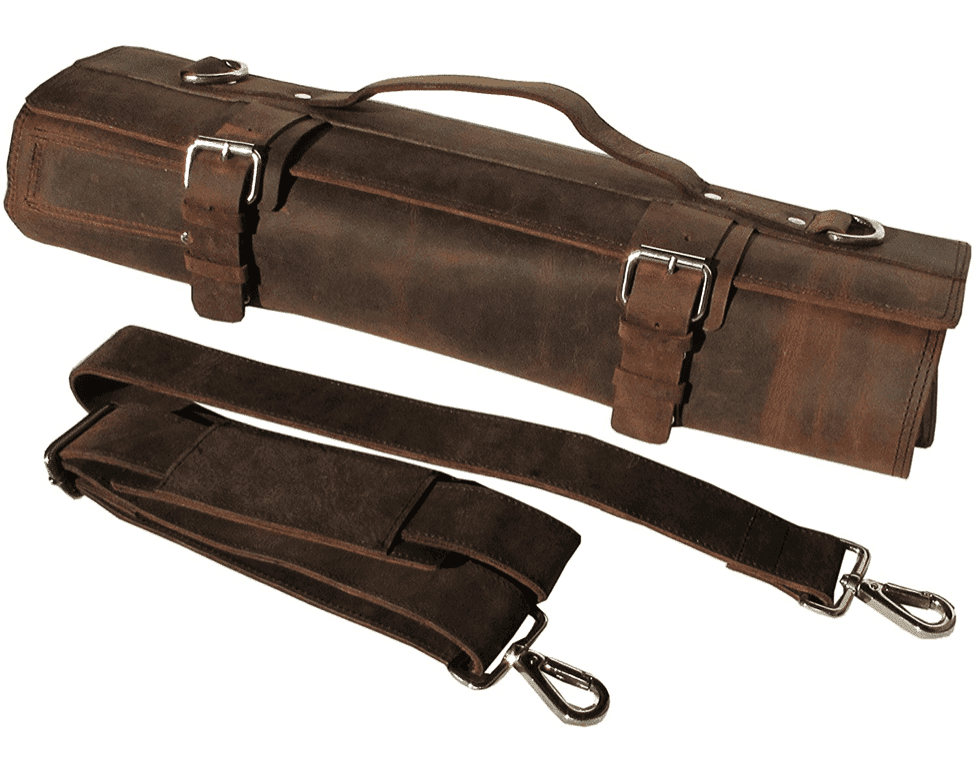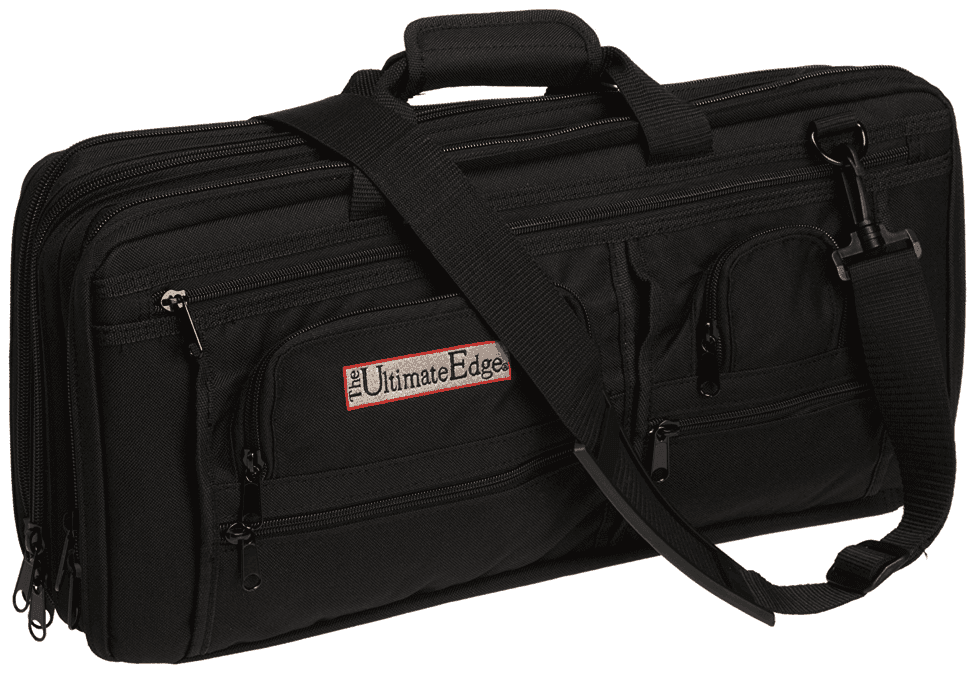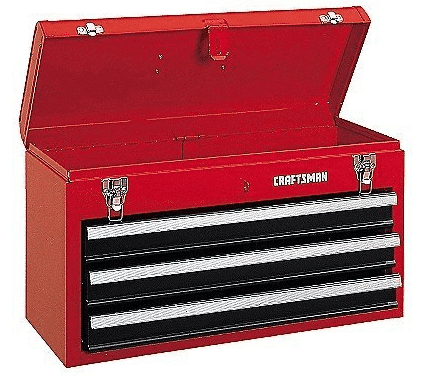KITCHEN KNIVES
How To Travel With Knives: The Best Knife Rolls, Bags, and Blade Guards
01.03.2017
If there’s one thing that is certain about cooking in someone else’s kitchen, it is that their knives are not as good as your own. This is true at grandma’s kitchen and it’s true about the house knives at restaurants. Professional cooks, like any other craftsmen, bring their own tools for the job. Doubly so for cooking off site at catering jobs – you would rather have it and not need it than the other way. I cook off site BBQs and can rely only what I bring. At the very least I always have a chef’s knife, paring knife, slicer, and serrated knife. Add to that if I know I am doing butchery or fish for the day. Throw in some basic kitchen tools – fish spatula, tasting spoon, plating spoons, mandoline, thermometer and other essentials and it ends up being a lot of stuff. Some knife rolls/bags perform better than others so I want to share what I look for in a knife bag and edge guards.
These are the criteria I consider for a knife bag:
- Capacity – It has to store a complete knife kit – enough to handle any task for the day. Preferably with room leftover for essential cooking tools. For myself, I need a bag that can fit chinese cleavers, meat cleavers, as well as longer knives. 270mm or 300mm slicers are not unusual.
- Material – Cooking is a dirty job. There is fire, hot oil, and grease all around. Things happen in the kitchen (and outdoors). I want a material that can resist spills instead of soaking up liquids. If you are a pro cook, be aware that the health department may ask you how you clean and sanitize your bag so be prepared.
- Looks – It’s subjective what you think looks good. However, I recommend against flashy bags. I know the people I cook with, but it is always off site catering so there are any number of other people walking around. In a restaurant kitchen, other than co-workers, there may be food purveyors, oven repair people, etc who also go in the back of house. That $700 custom leather knife roll? It might grow legs.
- Cost – I don’t want to spend more on a case than the contents
WIth those metrics in mind, let’s look at the pros and cons of the best options.
Canvas Knife Roll

This is a good starting point. Culinary students are usually given a few options like a Mercer kit that comes with 3 knives and a canvas roll. Then when they start working for real, they upgrade to a bigger roll. It works great for a lot of people. A big issue with knife rolls is that as the name implies, you roll it open on a counter, taking up 2 by 4 feet of counter space or more. My personal problem is many of them cannot accommodate the wide blade of a chinese cleaver. Canvas is okay but of course grease spills will stain it.
Pros
- Economical
- Pretty standard, not flashy or ostentatious in a professional kitchen
- Fits common knives other than cleavers
Cons
- Doesn’t fit enough non knife tools
- Takes up space to open, uncomfortable in tight quarters
This one from Wusthof has 10 slots, some pockets for tools, and can fit long slicers.
Leather Knife Rolls

When people start shopping for premium knife cases, the first option that comes up is leather. Same concept as the canvas rolls really, pockets for your knives, and rolls up. It looks great, but I think it also is more likely to get stolen. This is a real concern if you actually use your knife bag to bring knives to work. Another problem with leather is that it traps moisture. This can lead to rusting problems on your knives. There is vegetable tanned or chrome tanned leather. I shouldn’t have to even mention this because it chrome tanned leather looks cheap and I don’t think anyone uses it on knife rolls, but you definitely want vegetable tanned. Chrome tanned leather will rust your knives even faster because of residual chromium salts from the tanning process. Just don’t do it.
Pros
- Looks cool
Cons
- Expensive
- Rusts your knives
- Gets stolen
Ultimate Edge

I actually own the standard Ultimate Edge and wish I had paid the extra $15 for the deluxe. The difference is the Deluxe has additional pockets on the outside for even more space. That said, I am happy with the standard. The big sell of this bag is that it opens like a book instead of rolling out all at once. It keeps your knives more organized, you can carry more knives, and takes up less space on your work counter. On top of the knife pockets which can easily carry 300mm slicers and cleavers, it has an entire compartment with mesh pockets for small kitchen tools. The outside is a durable canvas and the inside has a lining material as well as flaps to keep your knives separate.
Here is a youtube video of a pro chef showing what you can fit in here:
![]()
Pros
- Carries everything you need from every type of knife to hand tools
- Compact to open
- 3 compartments and many pockets keep it organized
Tool box

This isn’t a joke. A know a few chefs who use this. You can carry any knives, cleavers, slicers, whatever will all fit. You can carry every kitchen hand tool you will need. It is splash proof, it is easy to clean, it is less likely to get stolen, and you can even put a padlock on it. I think it is ideal for a chef with an office and doesn’t need to move it often or for a caterer who needs a lot of stuff and wants it organized.
Pros
- You can fit everything you dream of
- Extra security
- Organization
Cons
- Heavy
Edge Guards
 Even in cases with individual slots for knives and flaps to cover them, it is best practice to put edge guards on all your knives. This is for safety and to protect your knives. I don’t like hard plastic edge guards because they scratch, they don’t fit properly, and they don’t breathe, causing rust issues even on stainless steel. Edge guards come in different sizes to fit the different styles of knives. I prefer Felt lined edge guards like these
Even in cases with individual slots for knives and flaps to cover them, it is best practice to put edge guards on all your knives. This is for safety and to protect your knives. I don’t like hard plastic edge guards because they scratch, they don’t fit properly, and they don’t breathe, causing rust issues even on stainless steel. Edge guards come in different sizes to fit the different styles of knives. I prefer Felt lined edge guards like these
Saya

On Japanese knife styles you may have an option to have a saya. It is a wood covering for the knife made of a soft wood. This really is the best protection for your knife. However, it is expensive and bulky in a knife case. I sometimes choose to go with the slimmer edge guards even on knives I have a saya for. Saya can be made custom and friction fit to your knife or they can require a pin to keep them on. Friction fit saya over time will not fit as you sharpen away your knife and eventually you will need a pin.









